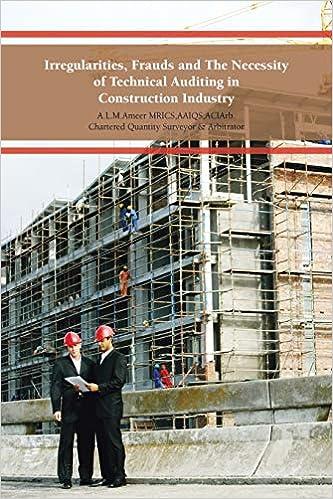Question
Quincy James, born and bred in Palmerston North, moved to Auckland for jobs in his early twenties and eventually came back in Palmy to raise
"Quincy James, born and bred in Palmerston North, moved to Auckland for jobs in his early twenties and eventually came back in Palmy to raise a young family and enjoyed the relatively lower local house/property prices in 2014. Being then in his thirties, he had earned extensive experience in window dressing business from the City of Sails and started the venetian blinds business for himself in good old Palmy. Since 2015, it has been quite successful. The property market in Palmy has also aggressively grown in the last few years. For the last few years, Quincy could not help but noticed that more and more customers have been inquiring about shutters (a type of window dressing that offers more expensive look and now becoming a trend). To capitalize on his goodwill in window dressing business and built customer base in Palmy, Quincy is considering an expansion plan to also become the supplier of locally made shutters that cater this growing demand in the Manawatu region. While it would be tough to compete with cheaper shutters shipped from overseas (e.g. China and Australia) offered by several other stores in town, Quincy is confident about his ability to adapt to the production process of the new product and quality control, along with Manawatu consumers patriotism to genuinely support the local businesses. First stop, the current manufacturing of venetian blinds is at its full capacity at the existing facility already. The new facility will thus be set up in an unused empty commercial space Quincy has acquired since 2018. It is located in the far end of Tremaine Avenue (a longstrip main street for Palmerston North tradies). A new machine with an estimated cost of $ 800,000 will be purchased. It will cost another $10,000 to ship over the machine from Australia while $15,000 will be expenses to have it installed. These additional initial costs of $25,000 cannot be expensed to deduct tax right away but are allowed to be included in the initial cost in investments (e.g. will be expensed through annual depreciation expenses on the machine through its life). In addition, inventories (e.g. wood panels and other materials) that are related to producing shutters will increase by $17,000 since the very beginning of the project (could be several months in reality but just for simplification). This increase in inventory related to the shutters product is projected to grow about 7% each year. All other current assets of the business will not be affected by the introduction of shutters production. The new machine has a remaining economic life of 4 years of which the straight-line method of depreciation will be used. For accounting purpose, the salvage value is projected as zero at the end of the fourth year. However, Quincy has an agreement with other established business in Hamilton to sell that machine for $80,000 at that point in time (e.g. four years from now). The section of the facility where the production of shutters will take place accounts for 80% of the whole Tremaine Avenue facility. Quincy has not utilized this commercial space since 2018 (the year he bought it). Being flat out with the existing venetian blinds business, the facility was rather abandoned. As a result, it had suffered lack of maintenance that even led to safety/hygiene concerns raised by the City Council. In fact, in an attempt to turn it around for commercial rental, Quincy had to spend $85,000 to sort this problem out and get the space ready for commercial use. As it happens, such expense will be actually paid about the time when the new project (shutter production in consideration) begins. Nevertheless, after such problem was resolved (just a month ago), another local garage door company just offered to rent this Tremaine Avenue facility from Quincy for $4,000 per month, before taxes (rental income assumed received at the end of the year as a lump sum rent and there is no other cost to Quincy involved with the renting out of this space. Rent income is taxable and assumed the same as business tax rate). Based on estimated figures from Quincy himself and his sales/production team, the shutters product, which is targeted at high-end homeowners, will generate the annual revenues of $ 800,000 (e.g. 80 houses at $10,000 each on average - each year) for the next four years. Related fixed and variable costs (together) are estimated as 60% of revenues figures, for this premium product (shutters). However, it also comes with the catch that the introduction of shutters will decrease the sales of existing venetian blinds product by $120,000 per year. The production costs of existing venetian blinds are 74% of revenue figures. The appropriate cost of capital for window dressing industry is 10 % (per year). Lets assume the business tax rate of 28% (and applied to all kinds of income to the company for simplicity).
Initial outlay of introducing the new product (shutters) to Quincy's business = 800,000
Calculation of cash inflow for year 1 = 150,000
Calculation of cash inflow for year 2 = 155,000
Calculation of cash inflow for year 3 = 152,000
Calculation of cash inflow for year 4 = 230,000
NPV @ 10% = 264,244 IRR = -5% PVI = 0.66969
At what rent (Dollars per month) would Quincy be indifferent between introducing shutters product and renting out the unused space to other businesses altogether?
Step by Step Solution
There are 3 Steps involved in it
Step: 1

Get Instant Access to Expert-Tailored Solutions
See step-by-step solutions with expert insights and AI powered tools for academic success
Step: 2

Step: 3

Ace Your Homework with AI
Get the answers you need in no time with our AI-driven, step-by-step assistance
Get Started


